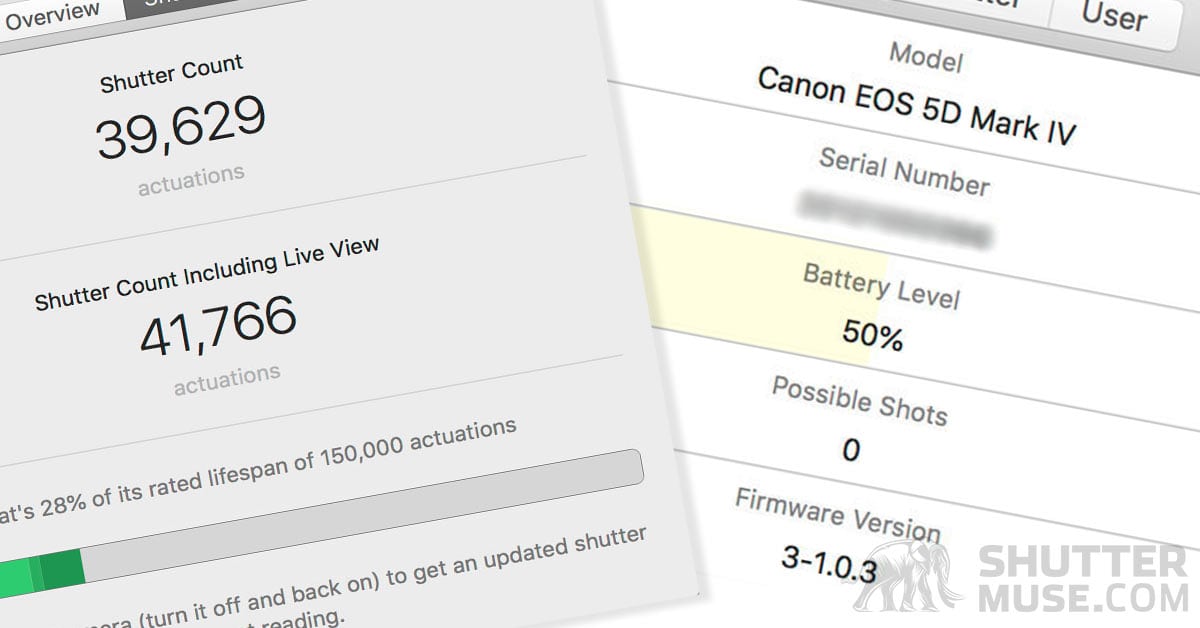If you need to purchase Mac OS X 10.7 Lion, you may order it from this page. The most current version of OS X is OS X 10.9 Mavericks. To learn more, please click here. What do you receive: An email with a content code for the Mac App Store. Note: Content codes are usually delivered within 1 business day but may occasionally take longer. 
 Using numeric suffix of filenames written by the camera on a flash card is not equivalent to camera's shutter count (the suffix resets to 0 after 9999). Here are examples when the filename does not indicate the true number of pictures taken with the camera.
Using numeric suffix of filenames written by the camera on a flash card is not equivalent to camera's shutter count (the suffix resets to 0 after 9999). Here are examples when the filename does not indicate the true number of pictures taken with the camera.
- A new flash card is inserted containing a picture file with higher numerical suffix. The numbering then continues with this higher suffix.For example, if the last file written by the camera was IMG_3750.JPG, this indicates that the shutter count is 3750. If a new flash card is inserted with a file IMG_4100.JPG, then the next picture taken with the camera will be written under IMG_4101.JPG. The shutter count in this case will be only 3751.
- If a blank flash card is inserted afterwards, some cameras like the Canon 60D will continue previous filename numbering; for example, will write file IMG_4102.JPG when shutter count is 3752.The file name is edited to lower the numerical suffix. Some cameras, such as the Canon 5D Mark II, will use the card filename to construct the name for the next picture. This results in a much lower perceived shutter count than the true shutter count.For example, let's say the filename is edited from IMG_9000.JPG to IMG_2000.JPG. The next picture file written by a camera like Canon 5D Mark II will be IMG_2001.JPG. The perceived shutter count is 2001, whereas the real shutter count is 9001.
- Pictures are taken when the camera is connected directly to a computer (without a flash card inside).


We were able to use our Canon 5D Mark II using the download for the more recent 5D Mark IV. There are some limitations, which I discuss below, but overall the older 5D Mark II still works very well. To download a GPS log file using EOS Utility, use Map Utility 1.8.0 or later for EOS 6D Mark II, use Map Utility 1.7.2 or later for EOS 5D Mark IV, use Map Utility 1.7.0 or later for EOS-1D X Mark II, use Map Utility 1.5.3 or later for EOS 7D Mark II, and use Map Utility 1.5.2 or later for EOS 6D. MacOS application that shows Canon EOS shutter count. 1D X Mark II, 5DS, 5DS R, 5D Mark IV, 5D, 80D, 750D (Rebel T6i), 760D (Rebel T6s), 1300D (Rebel T6) Download. How to download free mac os sierra. Adobe cs5 trial mac download. I had the Mac Photos App set to open to handle the transfer. I just got the 5d MK III and in reading the instructions there are some complicated instructions about going into the camera Menu setting and selecting each image to transfer, what a pain. And then it says if you dont have Canon EOS Utility installed, the transfer wont work.
Canon 5d Mark 3
- A new flash card is inserted containing a picture file with higher numerical suffix. The numbering then continues with this higher suffix.For example, if the last file written by the camera was IMG_3750.JPG, this indicates that the shutter count is 3750. If a new flash card is inserted with a file IMG_4100.JPG, then the next picture taken with the camera will be written under IMG_4101.JPG. The shutter count in this case will be only 3751.
- If a blank flash card is inserted afterwards, some cameras like the Canon 60D will continue previous filename numbering; for example, will write file IMG_4102.JPG when shutter count is 3752.The file name is edited to lower the numerical suffix. Some cameras, such as the Canon 5D Mark II, will use the card filename to construct the name for the next picture. This results in a much lower perceived shutter count than the true shutter count.For example, let's say the filename is edited from IMG_9000.JPG to IMG_2000.JPG. The next picture file written by a camera like Canon 5D Mark II will be IMG_2001.JPG. The perceived shutter count is 2001, whereas the real shutter count is 9001.
- Pictures are taken when the camera is connected directly to a computer (without a flash card inside).
